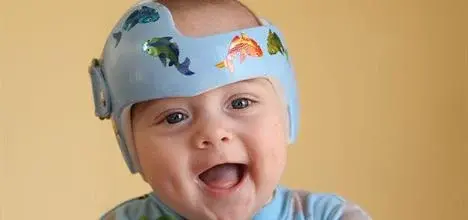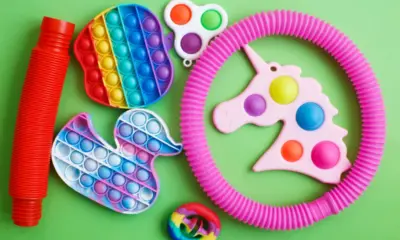Health & Wellness
Baby Helmet Therapy: What You Should Know as a Parent

Baby helmet therapy may sound intimidating, but it’s a proven solution for many infants diagnosed with flat head syndrome. Also known as cranial orthosis, this therapy helps gently correct head shape abnormalities like plagiocephaly. While some parents turn to repositioning or tummy time, others find helmet therapy more effective when recommended by a specialist.
Why Babies May Need Helmet Therapy
Infant skulls are soft and flexible to allow for brain growth and an easier birth. But that same flexibility can lead to deformational plagiocephaly, especially if a baby spends too much time on their back.
Besides flat head syndrome, some babies may have craniosynostosis. This condition causes the skull bones to fuse too early, and helmet therapy may follow surgery in such cases. Always seek a specialist’s advice before starting treatment.
Common Causes of Flat Head Syndrome
Several factors can contribute to plagiocephaly, including:
- Limited space in the womb, especially for multiples
- Premature birth leading to softer skull bones
- Extended time lying on their backs
- Muscular torticollis causing head-turning difficulties
Importantly, parents are not to blame—this condition is fairly common and manageable.
How Helmet Therapy Works
Once your baby is diagnosed, an orthotic specialist uses 3D scans to custom-design the helmet. Inside, soft foam padding gently guides the skull as it grows.
Despite initial discomfort, the helmet prevents further flattening while allowing normal development. Regular adjustments are necessary to accommodate growth and ensure comfort.
Duration and Monitoring
Most babies wear the helmet for 23 hours a day over 4–6 months. You’ll remove it only for baths. Frequent check-ins help track growth and prevent skin irritation or poor fit.
Some children require more than one helmet depending on growth rate. Each adjustment allows continued reshaping with gentle pressure. Parents should stay alert for scalp redness or rashes, which are manageable with proper cleaning and care.
Is Baby Helmet Therapy Safe?
Yes, the process is safe. Infants may need a short adjustment period, but most adapt quickly. Keeping the helmet clean and dry is crucial to avoid irritation. For example, Jessica, a mother who used helmet therapy with her son, cleaned it daily and saw excellent results.
Babies can still meet their developmental milestones. They play, eat, and sleep as usual. Some parents even find the helmet offers added protection during playtime.
Handling Public Curiosity
It’s normal for strangers to ask questions. One way to normalize it is by confidently explaining its purpose. Jessica often educated others, turning stares into supportive conversations.
Cost of Helmet Therapy
Prices range from $1500 to $3000, depending on the number of helmets needed. Unfortunately, insurance does not always cover the expense. Some parents manage with one helmet, while others may need two or three during treatment.
Is Helmet Therapy Effective?
Research shows helmet therapy has a high success rate, especially when started early. While repositioning can work, helmets often achieve better symmetry faster. The key is proper fit, regular monitoring, and starting treatment before the skull hardens too much.
When Is It Too Late?
Most skull growth slows around 10–12 months, making early intervention vital. After that, helmet therapy becomes less effective. So, don’t delay consultations if you suspect a problem.
Final Thoughts
Although the journey may seem overwhelming at first, baby helmet therapy can significantly improve your infant’s head shape and boost confidence as a parent. With guidance from specialists and consistent follow-ups, many families find the treatment both safe and rewarding.
Want more helpful parenting insights like this? Explore more expert-backed news and tips on our website today.












